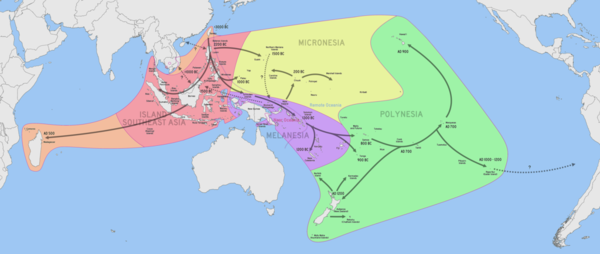Out of Taiwan model
The “Out of Taiwan” model is a migration theory put forward by archaeologist Peter Bellwood that suggests the Philippines was populated as a result of the migration of people of Austronesian ancestry.
Austronesian people (or Austronesian-speaking people) are a group of people across Southeast Asia, East Africa and the Pacific who speak Austronesian languages. According to the “Out of Taiwan” model, ancestors of these people originated on the island of Taiwan following the migration of pre-Austronesian-speaking people from continental Asia between 10,000 - 6,000 BC.
The migration to Taiwan purportedly took place during the Neolithic period, which began in around 6,500 BCE and continued until around 3,500 BC. According to the “Out of Taiwan” model, it was after this point that the large-scale growth of the Austronesian-speaking people

The model suggests that in around 3,000 BCE, Austronesian-speaking people began to experience significant population growth, which continued for more than 1,000 years. This is thought to have led to increase migration, with some of the first settlers believed to have landed in and around Luzon in the Philippines.
Austronesian people began to mingle and intertwine with Australo-Melanesian people, who are thought to have inhabited the islands around 23,000 years earlier. Over the next 1,000 years, they slowly spread to the rest of the Philippines and continued to migrate further, to areas including Borneo, Polynesia, Madagascar, New Zealand and Easter Island.
This theory is heavily based on findings that suggest people of Austronesian origin have been found in all of these locations, as has evidence of Austronesian languages and culture.
MLA Citation/Reference
"Out of Taiwan model". HistoryLearning.com. 2025. Web.
